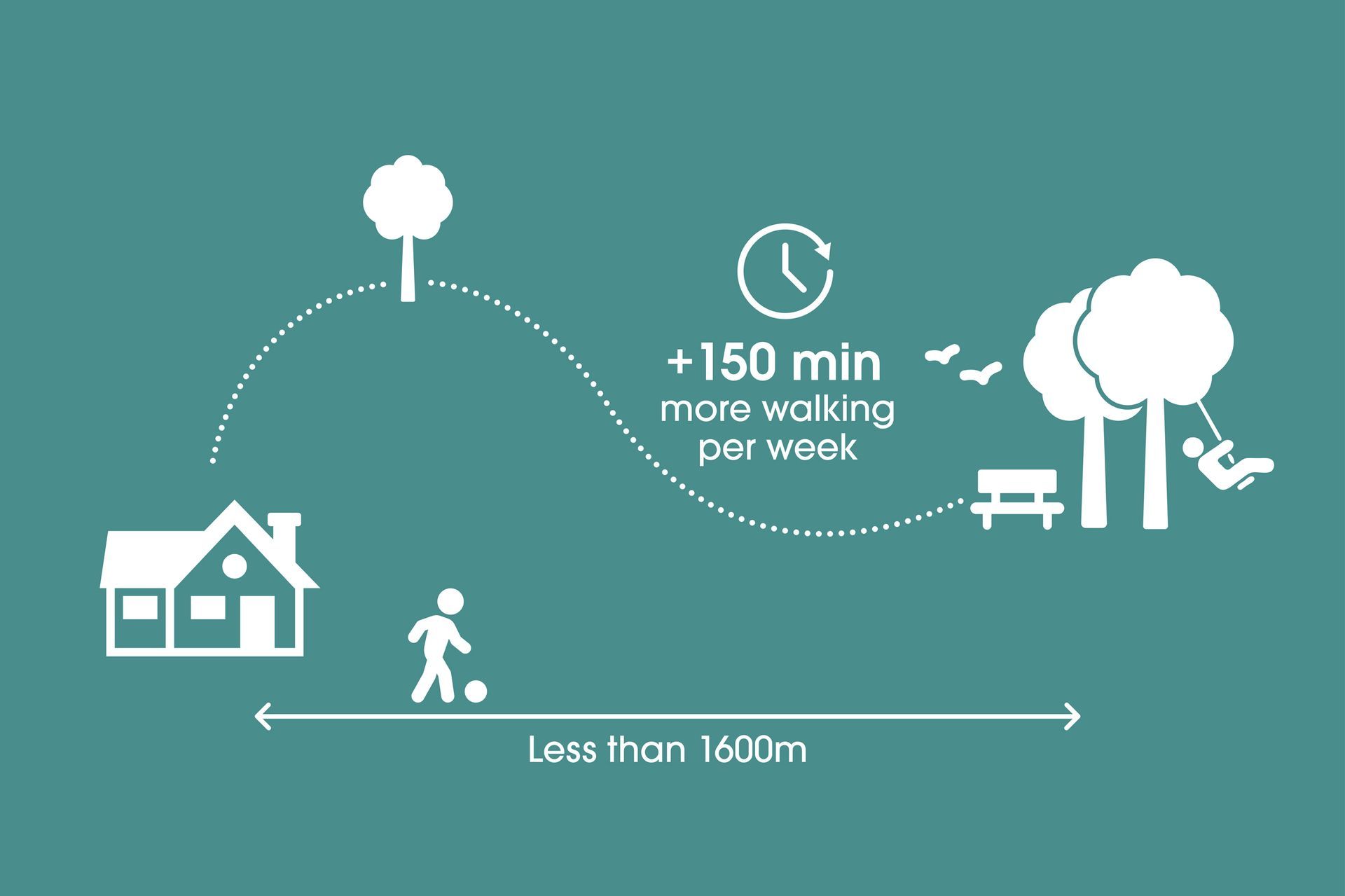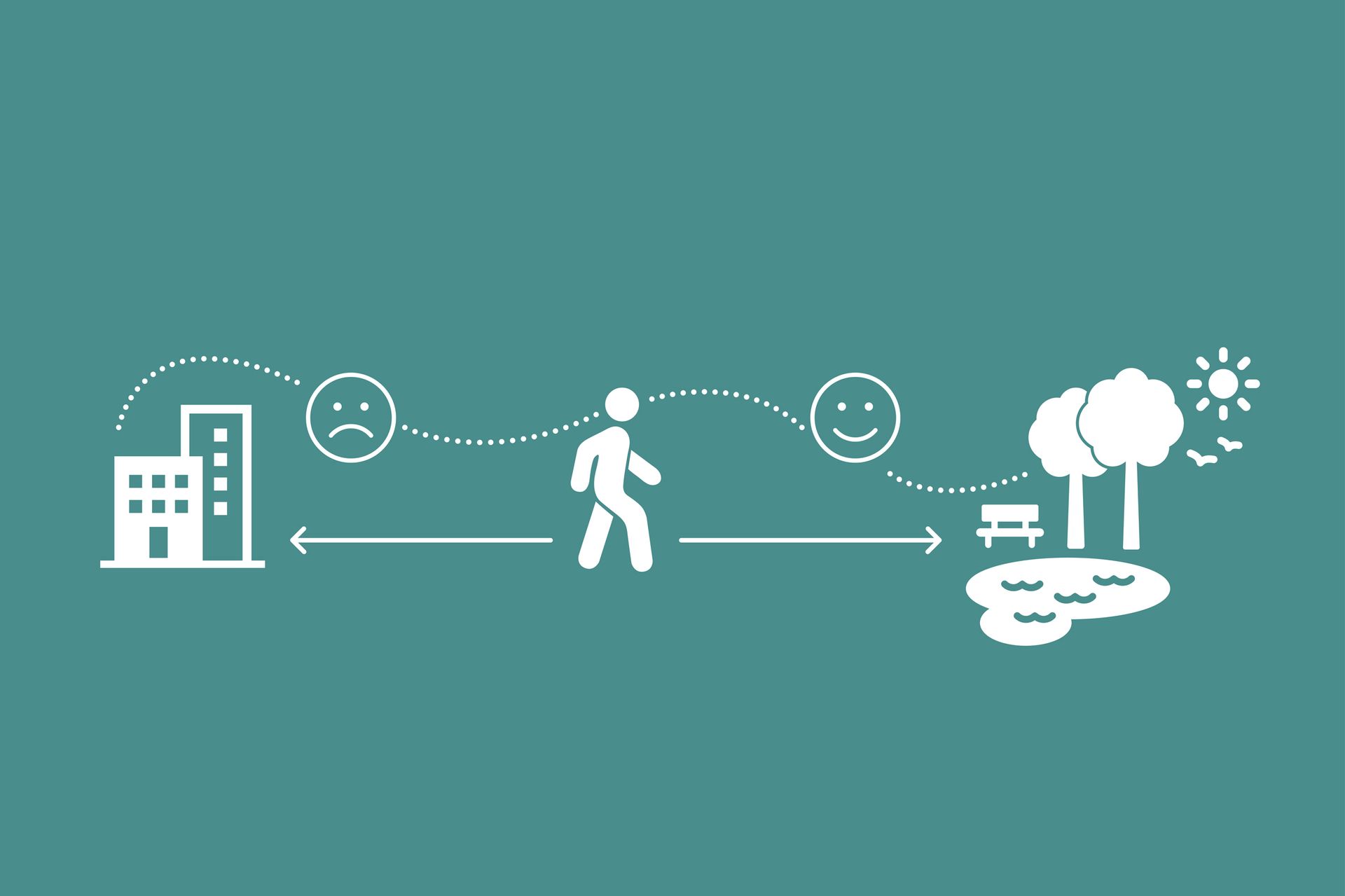Vibrant neighbourhoods have a well-distributed network of natural areas, as well as walkable and attractive public open spaces. These spaces allow the community to meet, play, chat and connect. The mix of public open space can be formal or informal, natural or man-made, sporting or passive but they all help meet a community’s recreational, sporting, play and social needs. In this section, find information on the relationship between park size and exercise rates, the mood-altering qualities of urban parks and how the rates of hospitalisation are related to easy access to green space. And that’s only the beginning.
Authors: Julianna Rozek, Dr Lucy Gunn, Anna Gannet, Dr Paula Hooper, Professor Billie Giles-Corti.
Detailed further guidance on this design feature is available on our
Publications and Policies page.
Residents with a larger neighbourhood parks within 1600m engage in 150 minutes more recreational walking per week than those with smaller parks.
What is public open space?
Public open space encompasses the variety of spaces within the urban environment that are readily and freely accessible to the wider community for recreation and enjoyment.
Green public open space
Green public open space is a subset of public open space. In public health research there is no universally used definition of green public open space. However, it typically refers to areas that are publicly accessible, have some greenery, and generally support some recreational activity. This usually includes parks, sports fields and nature reserves. Some studies have also included vegetated streetscapes, street trees and public school grounds.
Private green spaces such as residential gardens and private golf courses are not included in green public open space. However, they may be included in studies that measure the overall green space in neighbourhoods.
The Heart Foundation’s Quality Green Space Supporting Health, Wellbeing and Biodiversity: A Literature Review - shows the general definition of green public open space used in this review. Individual studies may use slightly different definitions.
Walkers exercising in urban parks report greater happiness and lower anger and depression scores
Adults with a wide range of green spaces around their home report 37% lower hospitalisation rates and 16% lower self-report rates of heart disease or stroke.




